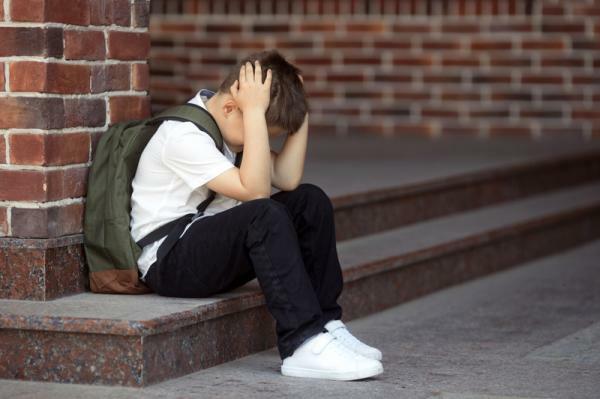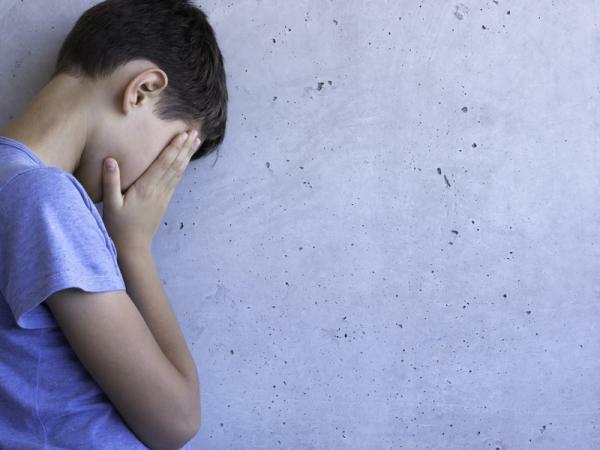
Bullying is a form of abuse present in the school environment among children, adolescents and young people with a very high prevalence today. It is said that one in four students suffer or have suffered bullying or bullying. Given the high prevalence of this type of abuse in recent years, there have been many studies carried out to investigate the causes that originate it with the intention of create preventive programs that allow this problem to be detected in time to avoid, as far as possible, the devastating consequences that this type of harassment generates in the victims.
In the following article we will present the types of bullying and its consequences for the victims, who are the figure most harmed in these situations of abuse.
Index
- Bullying causes
- physical bullying
- Psychological bullying
- verbal bullying
- sexual bullying
- social bullying
- cyberbullying
Bullying causes.
The origin of the different types of bullying is usually the same and its causes are related to the personality and living environment of both the aggressor and the victim and the observers:
Aggressor
Regarding the aggressor, the factors that usually lead this student to adopt this role of bully over his peers are: lack of impulse control, aggressiveness and excessive anger,unstructured family environment and/or riddled with abuse, negligence or lack of limits, lack of self-esteem and endless affective deficiencies.
Here you will find the Characteristics of people with low self-esteem.
Victim
With regard to the victim, the person who suffers bullying is usually characterized as a person with low self-esteem, fearful, with lack of vital force that, like the aggressor, has built his personality on an emotional and psychological basis with certain deficiencies affective
In this case, this has given rise to a fragile and fearful personality which is usually the point of view of the abusive personalities.
Observers
In the case of the group of observers, there are many factors that condition their passive behavior that increases and feeds the abuses carried out, but we could summarize them in two: disorientation before such an abusive situation and attempt not to attract attention so as not to suffer the same abuse as his partner or approaching the leader as a source of power, copying or encouraging his abusive behaviors
The consequences that occur, in general terms, on the aggressors are a increased levels of impulsiveness and aggressiveness and in the use of coercive techniques as a lawful source of power. In observers, this type of abuse usually causes, on the one hand, more fear and protection against possible situations of abuse or, in the other group, a perverse look is encouraged on the possibility of obtaining power through different types of bullying.
Physical bullying.
Physical bullying refers to a whole set of acts of physical violence that the aggressor performs on the victim, encouraged by passive observers. Hitting, shoving, fighting, slapping, tripping, etc. are examples of physical bullying that the aggressor uses to intimidate the affected person.
The consequences that this type of abuse generates on the victim, in addition to psychological suffering, is added to the physical pain derived from the attacks. In turn, it causes great defenselessness and increases submission over aggressor figures.
Psychological bullying.
Psychological bullying refers to all types of abuse carried out through conduct that directly or indirectly constitutes manipulation of the victim, increasing the strength of the aggressor and her influence over him: blackmail, threats, intimidating gestures, etc.
This type of abuse increases the victim's fear of certain situations and school environments, cause anxiety before the unexpected manipulations of the aggressor and great internal and helplessness

Verbal bullying.
This type of bullying refers to all kinds of verbal abuse that directly or through written messages or from third parties the aggressor exerts on his victim: insults, mockery, humiliation, false rumors, shouting, threats, etc.
The consequences of this type of bullying on the victim would be the psychological paralysis and bodily numbness in the presence of the aggressor or his classmates, fear and panic in certain school situations, learned helplessness, increases introversion damaging subsequent social relationships, anxiety, etc

sexual bullying
Sexual bullying can occur through various manifestations such as homophobic behaviors towards certain sexual orientations, vexatious comments or acts and, in extreme cases, sexual abuse.
The consequences of these acts on the victim are very damaging, as is well known in the case of any type of child or youth sexual abuse. A very deep part of those sexually assaulted is broken and, in many cases, psychological dissociations can occur as a protection mechanism before the pain suffered.
Personal devaluation, mistrust of the world and defenselessness increase exponentially in these cases. In this article you will find more information about the Dissociative disorders: what they are, symptoms, causes and treatment.
Social bullying.
Social bullying refers to all those behaviors encouraged by the aggressor that cause indifference towards the victim by not only him but a good part of his environment. The manipulative attitude of the aggressor encourages, in the rest of the classmates, behaviors of rejection, exclusion or indifference towards the victim in question.
The psychological consequences on the affected person increase their low levels of self-esteem and can provoke in them responses of flight and social and school avoidance that, over time, can give rise to different types of phobias such as social phobia, agoraphobia, etc

cyberbullying.
Cyberbullying has unfortunately become a great tool for school bullying given the magnitude of its consequences and, in turn, the possibility of maintaining the anonymity of the person aggressor. This type of abuse occurs through all kinds of social media in which vexatious images, videos or gossip about the victim of bullying are disseminated.
The consequences that this type of abuse generates on the victim can lead to states of paranoia and psychological and emotional blockage and paralysis.
The most serious of the consequences that prolonged bullying situations of any kind can give rise to on the victim is suicide. The work to prevent this type of abuse from school institutions becomes a obligation of authorities, teachers and parents as the best way of protecting the weakest people and vulnerable.
This article is merely informative, at Psychology-Online we do not have the power to make a diagnosis or recommend a treatment. We invite you to go to a psychologist to treat your particular case.
If you want to read more articles similar to Types of bullying and its consequences, we recommend that you enter our category of Social psychology.
Bibliography
- Gabarda, v. "Bullying in the classroom". International University of Valencia


